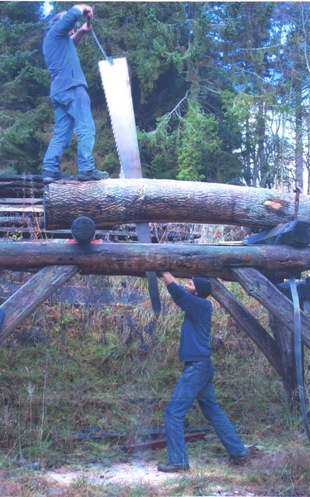Conservation and Restoration:
These are two distinct things: In conservation we try to retain as much as possible of what is there already, exactly as it is, applying even modern materials and techniques if required. In restoration we try to faithfully restore a building to a condition it may have been in at some time in the past by recreating the styling and details of that period, preferably by use of appropriate materials and techniques. Sometimes the right road lies somewhere inbetween.
One of my particular interests is this conservation and restoration of historic timber buildings. I have plenty of experience of such work, including full surveys, production of repair strategies & schedules, use of traditional materials & techniques etc.
I have plenty of experience of such work, including full surveys, production of repair strategies & schedules, use of traditional materials & techniques etc.
Whilst much of this experience is based in England I am constantly developing my understanding of timber building traditions in the generally little understood Scottish context.
It is not commonly realised that through most of our history the majority of buildings in Scotland were made mainly of wood. For example the Statistical Account for Scotland recorded at the end of the eighteenth century that the centre of the town of Dundee had no more than four stone houses, all the rest being wooden!
Nowadays however there are not many buildings in Scotland which incorporate a high proportion of timber, a situation that has existed since they were gradually replaced due to a mixture of fashion and legislation beginning around the time of the Scottish enlightenment in the 1700’s. This rarity of Scottish timber buildings makes conservation work even more of a treat when I am lucky enough to be involved!
The photo on the right is of a house in Bruges in Belgium which is a living example of a timber framed town house, in many ways quite similar to the kind of buildings that would have made up the towns of Scotland.
Conservation: Conservation of a building begins with what are often very difficult decisions about how best to go ahead. More often than not there are a number of parties involved in making these decisions, client, architect, specialist tradesmen, engineer, grant giving body, building inspector, NGO’s (Historic Scotland, the SPAB) etc. all with their contribution, which can make for a very confusing scenario. If the contractor for a particular element of work, such as the conservation carpenter, has a clear understanding of the various possibilities of how to proceed and experience of applying them, it can help greatly with finding the solution that will suit the particular project. I can fulfill this role thanks to my experience in the field and my understanding of the relevant codes and ethics, such as the ICOMOS charter (International Council on Monuments and Sites).
ICOMOS charter (International Council on Monuments and Sites).
Restoration: I have also been involved in a number of restoration projects over the years, ranging from the new hammer beam roof of the great hall at Stirling Castle, for Historic Scotland, to a hypothetical reconstruction of an iron-age meeting house/ceremonial round house for the Ancient Technology Centre in Cranbourne (left). These projects are always interesting and often require the use of tools and techniques no longer used in the modern age, which is fun but often, especially when converting timbers by hand, also very tiring!
The fact of actually using the traditional tools and the traditional techniques constitutes a form of hands-on archaeological research. It allows one to gain an understanding of old buildings and how they were made, that is not normally available to conservators or historians researching a building. These insights give a unique point of view of a building, often allowing a detailed interpretation of how it was originally built, and why it was built in that particular way. Actually the everyday humdrum work of a green oak framer involves being deeply submerged in the history of the craft, since there is a direct line of communication with the great masters, and the lowly apprentices, of the past, through the training we receive from our teachers, and also through the reading of the markings, design and idiosyncrasies of the historic buildings we survey and conserve.
We learn about history by living it every day in our work.
J. Rose Carpentry